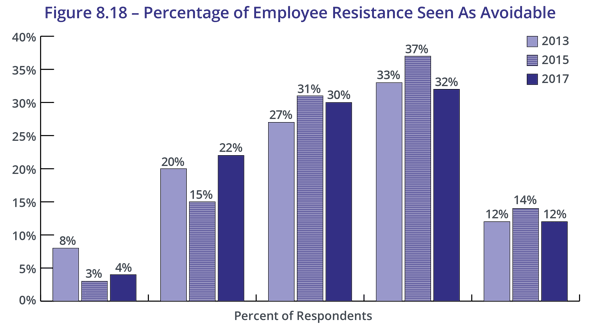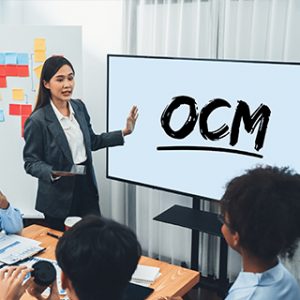

Being involved early in a change is always a good thing. In fact, Prosci’s research shows a direct correlation between starting change management early and meeting or exceeding project objectives. Although engaging early can be a challenge when specific details are unclear or still emerging, waiting has consequences. Don’t let this dilemma make you feel stuck. You can add significant value when you start early, even with incomplete information.
STARTING LATE HAS CONSEQUENCES
During times of extreme uncertainty, waiting to have complete information may feel like the best way to avoid rework, save costs, and keep employees well-informed. But waiting to implement change management activities later in the project lifecycle creates a new set of problems. The result can undermine project outcomes and your overall change management efforts.
.png?width=600&name=Blog-Figure-6.5%20(1).png)
.png?width=600&name=Blog-Figure-6.5%20(1).png)
Source: Prosci Best Practices in Change Management
Fortunately, Prosci’s research offers useful guidance you can apply immediately to keep your changes moving, no matter how incomplete the project information is.
WHAT TO DO AT PROJECT INITIATION WHEN INCOMPLETE INFORMATION EXISTS
Given a lack of information about a project solution and design, what can you realistically do at project initiation to move your project and people forward with an important change? In 2011, change practitioners who participated in Prosci’s Best Practices in Change Management benchmarking research shared several helpful approaches. These ideas remain valid today and are considered evergreen.
Top suggestions for action include:
1. Create a communications plan to describe the desired results of and need for change
Communicate details of the change openly and often to increase transparency and awareness of the change. Include desired results, the need for change, and current information gaps. Establish expectations for communication surrounding the change by designating structured channels.
2. Analyze the organizational climate and its reaction to change, and document common risks and areas of resistance
Use systematic, measurable assessments to analyze the organizational climate and its reaction to change. Common measures include change impact analyses, change readiness assessments, organizational culture assessments, and change saturation assessments. Identify common or historical risks, areas of resistance, and pain points for both the organization and the project.


Source: Prosci Best Practices in Change Management
3. Identify stakeholders and involve them in the solution design
Perform a stakeholder analysis to identify and categorize stakeholders according to the extent the change will affect them. Involve stakeholders and end users in the design of the solution, corresponding with their proximity to the change to encourage engagement.
4. Develop a flexible, high-level change management plan that includes key deliverables and required resources
Create a high-level change management plan that identifies deliverables from the change management function, the timing of those deliverables, and required resources. Design this plan flexibly, allowing for adjustments according to future insights and information.
5. Coordinate change management and project management plans
Incorporate change management actions into project management plans from the beginning of the project to establish change management as a valuable component. Express the need for change management in a business case and document tangible benefits, return on investment (ROI), and statistics on change management success. Logically relate change management activities to the project plan and deliverables in the project schedule.
6. Identify and solicit support from sponsors of change
Identify change sponsors at the project’s initiation to identify and remedy resistance within leadership. Establishing support from change sponsors clearly and coherently guides the change in a manner consistent with the project’s goals and timeline.
7. Designate and educate a change management team
Designate members of a change management team and educate them fully on the change management methodology chosen for the project. The change management team should build a fundamental understanding of the process to be used across stakeholder groups by explaining the basic roles and steps of the methodology.
CLARITY DURING UNCERTAIN TIMES
Before joining Prosci, I led the change management practice at a large healthcare organization for eight years. After training, coaching, and supporting many talented change practitioners, I know well the pressure to produce a change management plan with incomplete information. Over the years, I have shared the insights above more than any other research. It continues to help countless practitioners prepare and support people during change and uncertain times. I hope it helps you too.
This article is originally published on Prosci via Lisa Kempton.
MARG is a leading Training & Consulting firm with over 200+ clients and more than 150,000 trained professionals. MARG is the only authorized affiliate of Prosci Inc. in India. For more information contact a MARG learning partner at [email protected].





